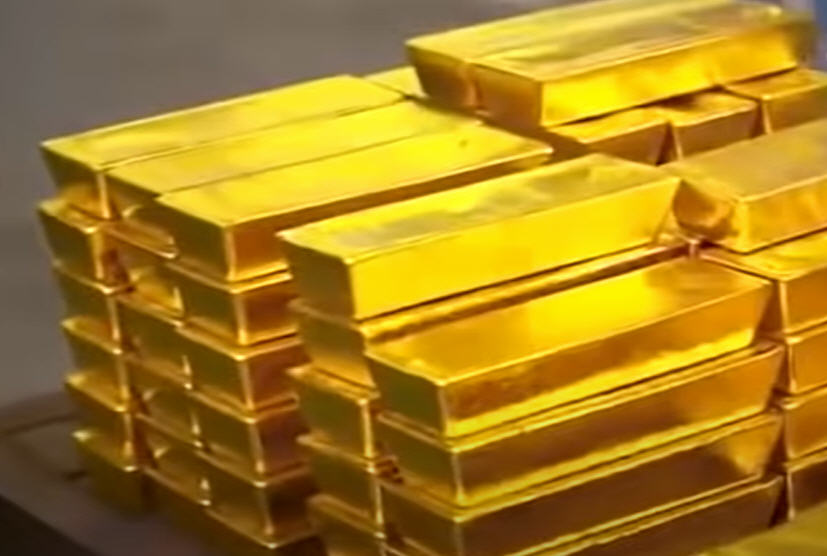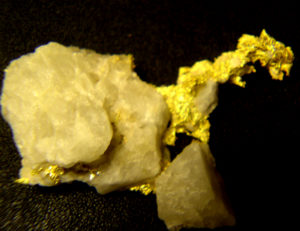Nevada Gold Mining
The entire gold mining process at Round Mountain Mine, Nevada.
Nevada is often called the “Silver State,” but it’s an absolute powerhouse when it comes to gold production.
Nevada Gold Mining

gold bars
Historical Significance:
- Early Discoveries: Modern gold mining in Nevada began in 1849 with placer gold discoveries near the Carson River.
This predated the famous Comstock Lode discovery in 1859, which, while known for silver, also produced significant gold. - “Invisible Gold” and Carlin-Type Deposits: A major turning point was the discovery and development of “invisible gold” deposits, specifically the Carlin-type deposits, starting in the 1930s. These deposits contain gold that isn’t visible to the naked eye and are disseminated throughout sedimentary rocks.
The Carlin mine, opened in 1965, ushered in a new era of gold production. - Carlin Trend: The Carlin Trend, a geological belt extending northwest and southeast from the original Carlin discovery, is now one of the major gold-producing regions in the world, with over 20 mines. Other important trends include the Battle Mountain-Eureka Trend and the Walker Lane Trend.
- Current Production and Economic Impact:
- Leading US Producer: Nevada consistently leads the United States in gold production, accounting for roughly 70-76% of all U.S. gold output.
- Global Significance: Nevada ranks among the top five gold-producing regions globally, often behind only China, Australia, and Russia.
- Major Industry: Gold and silver mining contribute significantly to Nevada’s economy, accounting for billions of dollars annually and supporting thousands of direct and indirect jobs.
- Reserves: Nevada has substantial proven and probable gold reserves, estimated to be over 54 million ounces.
Key Operations and Companies:
- Nevada Gold Mines: This joint venture between Barrick Gold (61.5% ownership and operator) and Newmont (38.5% ownership) is the world’s single largest gold-producing complex.
It encompasses numerous open pit and underground mines, including those in the Carlin, Cortez, Phoenix, and Turquoise Ridge complexes. - Major Mines: Some of the prominent active mines in Nevada include Goldstrike, Cortez Gold Mine, Carlin Operations (Gold Quarry, Emigrant/Rain, Pete Bajo, Leeville), Long Canyon, Turquoise Ridge & Twin Creeks, and Round Mountain, among others.
Mining Methods:
- Nevada gold mines utilize both open-pit and underground mining methods, depending on the depth and nature of the ore body.
- Processing often involves technologies adapted for Carlin-type deposits, such as heap leach facilities, oxide plants, flotation plants, autoclave facilities, and roaster facilities.
Regulation and Environmental Considerations:
- Strict Regulations: Nevada’s mining industry is subject to rigorous state and federal environmental regulations, including those from the Environmental Protection Agency (EPA), Bureau of Land Management (BLM), and the Nevada Division of Environmental Protection (NDEP).
- Reclamation: Mining companies are required to develop comprehensive reclamation plans and post financial guarantees (bonds) to ensure that disturbed land is reclaimed to a productive use after mining operations cease. Nevada holds billions of dollars in such guarantees.
- Water and Air Quality: Regulations focus on water conservation and quality, with requirements for off-site water discharge to meet state standards. Mercury emissions from mining facilities have also been a focus of reduction programs.
- Leading US Producer: Nevada consistently leads the United States in gold production, accounting for roughly 70-76% of all U.S. gold output.
Nevada Gold Mining
#######
Also see the most expensive type of gold nuggets, the Crystalline Gold Nuggets

Crystalline gold
Subscribe to our Youtube Arizona Gold Prospecting channel
Click Here for great Gold Prospecting Equipment Deals
DISCLAIMER:
- Some of the links in this description and in our videos may be affiliate links, and pay a small commission if you use them, but never increase the basic cost. I really appreciate the support. The content in my Youtube videos & blog posts SHALL NOT be construed as tax, legal, insurance, construction, engineering, health & safety, electrical, financial advice, prospecting or other & may be outdated or inaccurate; it is your responsibility to verify all information. I am a not financial adviser. I only express my opinions based on my experiences. Your experience may be quite different. Investing of any kind involves risk. While it is possible to minimize risk, your investments are solely your responsibility. You must conduct your own research. There is NO guarantee of gains or losses on any investments. My produced videos are for entertainment purposes ONLY. DO NOT make buying or selling decisions based on these videos. If you need advice, please contact a qualified CPA, attorney, insurance agent, contractor/electrician/engineer, financial advisor, or the appropriate professional for the subject you would like help with.
- Keep in mind land use and land boundaries are constantly changing, before going to a unknown location you must do extensive research not only into the current weather conditions, access and current land status. Keep In mind private property owners and mining claim owners do not take kindly to trespassers and or claim jumpers. Always follow local laws and regulations related to prospecting and land use. Regulations and restrictions are constantly changing on BLM lands, State lands, National Monuments and tribal lands. It is your responsibility to totally investigate any potential prospecting area prior to heading out. Failure to do so, could not only result in massive fines but also imprisonment and confiscation of all your equipment.

0 Comments